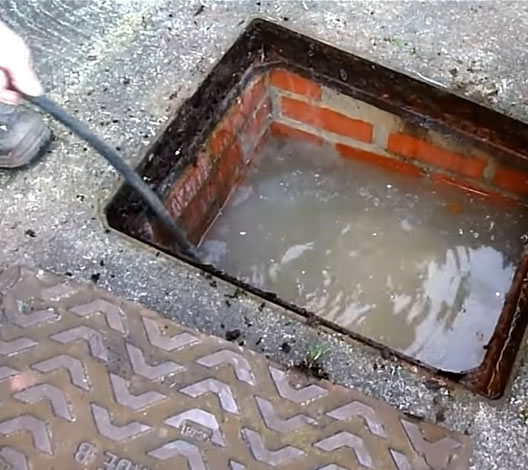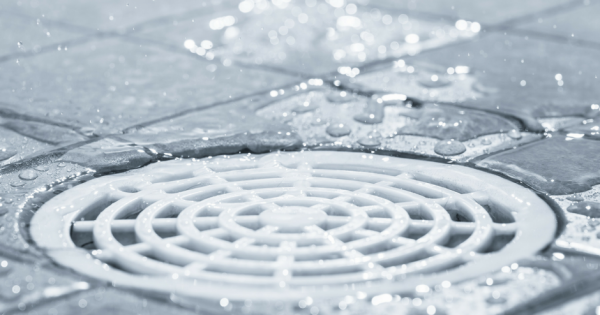Ways to Clear a Blocked Drain Before Contacting Expert Plumbers
Ways to Clear a Blocked Drain Before Contacting Expert Plumbers
Blog Article
This great article listed below relating to Tips for Dealing with Clogged Drains and Sewer Lines is relatively attention-grabbing. Give it a try and draw your own personal ideas.

Intro
Taking care of a blocked drain can be a discouraging experience, interrupting everyday tasks and possibly causing damages to your residential property. Nevertheless, before connecting to pipes specialists, there are actions you can take to attend to the problem yourself. In this overview, we'll check out DIY solutions and safety nets to take on a blocked drainpipe efficiently.
Identifying the Issue
The very first step in attending to an obstructed drain is identifying the indications. Slow water drainage, gurgling audios, foul odors emanating from drains pipes, or water support up prevail indications of an obstructed drainpipe. Recognizing these indicators early can assist avoid better issues.
Picking the Right Plumbing Service
When selecting a pipes solution, think about elements such as experience, licensing, and client evaluations. Pick a trusted plumbing technician with a record of high quality workmanship and transparent rates methods.
Price Considerations
The cost of professional drain cleaning company can differ depending upon the severity of the obstruction and the plumbing professional's prices. Request quotes from numerous carriers and ask about any added fees to guarantee openness and stay clear of surprises.
Security Measures
When trying do it yourself drain cleaning, prioritize safety. Wear protective handwear covers and glasses to stay clear of contact with unsafe chemicals or germs. Never mix various drain cleaning products, as this can generate dangerous fumes.
Instance Studies
Real-life instances highlight the efficiency of DIY services and the relevance of timely expert intervention in dealing with drain obstructions.
Typical Sources Of Blocked Drains
Comprehending the elements that contribute to drain clogs is necessary for reliable resolution. Typical wrongdoers include hair, soap scum, grease, food particles, and foreign items like hygienic items or paper towels. Tree origins attacking underground pipes can also trigger significant obstructions.
Do it yourself Solutions
For small clogs, numerous DIY options can be effective. Pouring boiling thin down the drainpipe can assist dissolve oil and debris. Baking soda and vinegar or a mix of salt and baking soft drink can work as natural cleansers. Utilizing a bettor or plumbing snake to displace obstructions is an additional option.
Devices and Tools
Having the right tools accessible can make do it yourself drain cleansing more effective. A plunger is a functional device for getting rid of obstructions in sinks, commodes, and showers. A plumbing snake or auger can get to much deeper obstructions, while drainpipe cleaning chemicals can be made use of cautiously for persistent blockages.
Safety nets
To prevent future clogs, embracing safety nets is vital. Mount drainpipe guards or filters to catch hair and debris before they enter the pipes. On a regular basis flush drains with warm water to dissolve oil buildup, and prevent disposing of grease or solid waste away.
When to Call a Professional
While DIY solutions can resolve minor blockages, certain signs show the demand for professional aid. Persistent blockages, foul odors in spite of cleaning up efforts, or multiple drains supporting at the same time are warnings that necessitate experienced intervention.
Final thought
By complying with the ideas laid out in this overview, you can properly tackle obstructed drains and protect against future plumbing concerns. Whether opting for DIY remedies or looking for expert support, punctual action is vital to preserving a healthy pipes system and preserving the honesty of your home.
How to Clear a Clogged Drain Yourself (And When to Call In the Professionals)
What Can Clog a Drain
Dirt Skin flakes Hair Grease Soap scum Food Offset pipes Tree roots Small objects Mineral buildup DIY Tricks to Unclog a Drain
You can fix this! Once you have identified the source of the clog (or have a vague idea), you can try one or a combination of these fixes in order to clear your plumbing.
Wire Hanger or Snake
Untangle and clear out hair from a drainpipe with a homemade snake. Use a straightened-out wire hanger with a 90-degree angle hook to locate the clog and drag out any unwanted material.
Remember not to push the clog further down to where the wire hanger cannot reach! If you need to follow up with a plunger, give it a try. Your efforts might be more successful after it’s been wire-snaked.
If you want to get fancy and don’t have a wire hanger to spare, head to the store and pick up a hand-operated drain snake. You can get one for $10-$30. It may save you the hassle, and provide additional length to reach deep into the clogged pipe.
Plunger
A cup plunger has a suction cup attached to a wooden handle. The rubber creates a seal around the drain, and increases the pressure force of the plunger.
Plunge for 30-second increments to loosen the clog. This may need to be repeated over the course of 15-20 minutes. Once plunged, run the water to flush the remaining material out of the drain.
Remember– never use a plunger if you have used a chemical drain cleaner. These chemicals can splash up from the force of the plunger and cause serious injury or burns.
Boiling Water
Hot water can sometimes break up materials into a flushable amount. Dirt, grease, and soap buildup requires heat in order to unstick from surfaces.
Take your kitchen kettle and heat your water to a boil. Once it reaches a rolling boil, pour it directly down the drain into the blockage. Carefully follow with plunging, if necessary.
Don’t worry if this takes more than one try! It can often take multiple kettles and repeated plunging in order to clear a particularly stubborn clog.
Chemical Drain Cleaner
As a last resort, pick up a bottle of chemical drain cleaner. Drain-cleaning chemicals are potent, and not very good for the environment.
You may need to wear protective eyewear in gloves before handling your bottle of chemical drain cleaner. Follow the instructions printed on the bottle, and flush with water as soon as the instructions allow. Do not follow with plunging.
Baking Soda and Vinegar
As a safer alternative to chemical drain cleaner, baking soda and vinegar can create a chemical reaction that clears tough clogs.
Combine one cup of cleaning vinegar with one cup of boiling water, and set aside. Once you have done this, pour half a cup of baking soda down the drain. Give the baking thirty seconds to settle and cover a large portion of the problem drain.
Following the baking soda, pour down your vinegar and hot water solution. Once the vinegar and baking soda combine, the mixture will bubble and fix. Let this reaction fizzle in the drain for about an hour.
After an hour, follow with a kettle’s worth of hot water. The heat and liquid should flush out any remaining material.
When to Call a Plumber
If your DIY attempts haven’t cleared your clog drain, it’s time to call in a professional. It’s not worth losing access to your kitchen sink or high-traffic bathroom. A clog in a vital area can keep you from the things you’d rather be doing, and derail your routine.
Anytime a clog is causing water to spread is a time to call in a plumbing service. What starts out as a little bit of water can quickly grow into serious, expensive water damage.
Additionally, a serious clog can result in burst pipes or serious leaks. Make sure you know when to take it seriously!
https://myguysnow.com/how-to-clear-a-clogged-drain-yourself-and-when-to-call-in-the-professionals/

I came across that post about while doing a lookup on the search engines. Do you know another person who is sincerely interested in How to handle a clogged drain in your home? Take a moment to share it. We enjoy reading our article about Tips for Dealing with Clogged Drains and Sewer Lines.
Maintenance Sign-Up Report this page